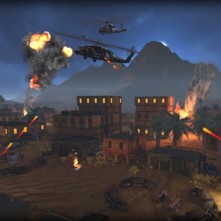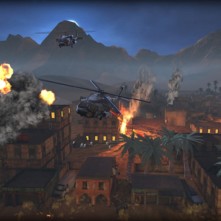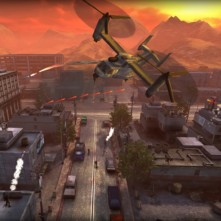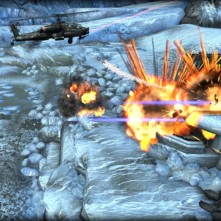Karateka sequel’s unknown genre
| September 17th, 2012 1:26 PM by Ken Gagne | Filed under Game trail, Software showcase; Comments Off on Karateka sequel’s unknown genre |
In February, I shared the news that Jordan Mechner‘s original Apple II game, Karateka, is being relaunched. But as discussed in the September episode of Open Apple, the direction this reimagining is taking could leave traditionalists perplexed.
When an iOS port of the new Karateka was confirmed, Touch Arcade reported this summary of the game:
In this rhythm-fighting game, players assume the role of three Japanese warriors attempting to rescue a kidnapped princess from an evil warlord. Players engage in frenetic one-on-one battles with various enemies, using timed martial arts moves (i.e., punch/kick combos) to stun opponents and drain their health meters. Matches are highlighted by battle cries, colorful light flashes, and slow motion effects; when players’ character is knocked out, a brief cutscene depicts him falling down the side of a mountain.
A rhythm game? One in which players time their input to match the game’s soundtrack — like PaRappa the Rapper?
At the time of PaRappa’s release for the original Sony PlayStation in 1997, I gave it a score of 8.0 out of 10 — not terribly compelling in today’s competitive video game market. But PaRappa has stood the test of time better than I expected, and most gamers who knew this quirky little title look back on it fondly. It’s often considered the first modern rhythm game, a genre that grown in popularity thanks to titles such as Dance Dance Revolution, Guitar Hero, and Elite Beat Agents.
So yes, rhythm games can be fun — but I’m having a hard time envisioning the hero’s ascent of Akuma’s fortress to rescue Princess Mariko as a music-based game. What sparse soundtrack the original Karateka featured was not central to the gameplay experience, so to introduce a core mechanic absent in the series origin strains the continuity of the franchise.
It’s also possible that Touch Arcade was fed inaccurate infomration. We’ll find out when the game is released for Microsoft Xbox 360, Sony PlayStation 3, Nintendo Wii U, and other platforms later this year.















